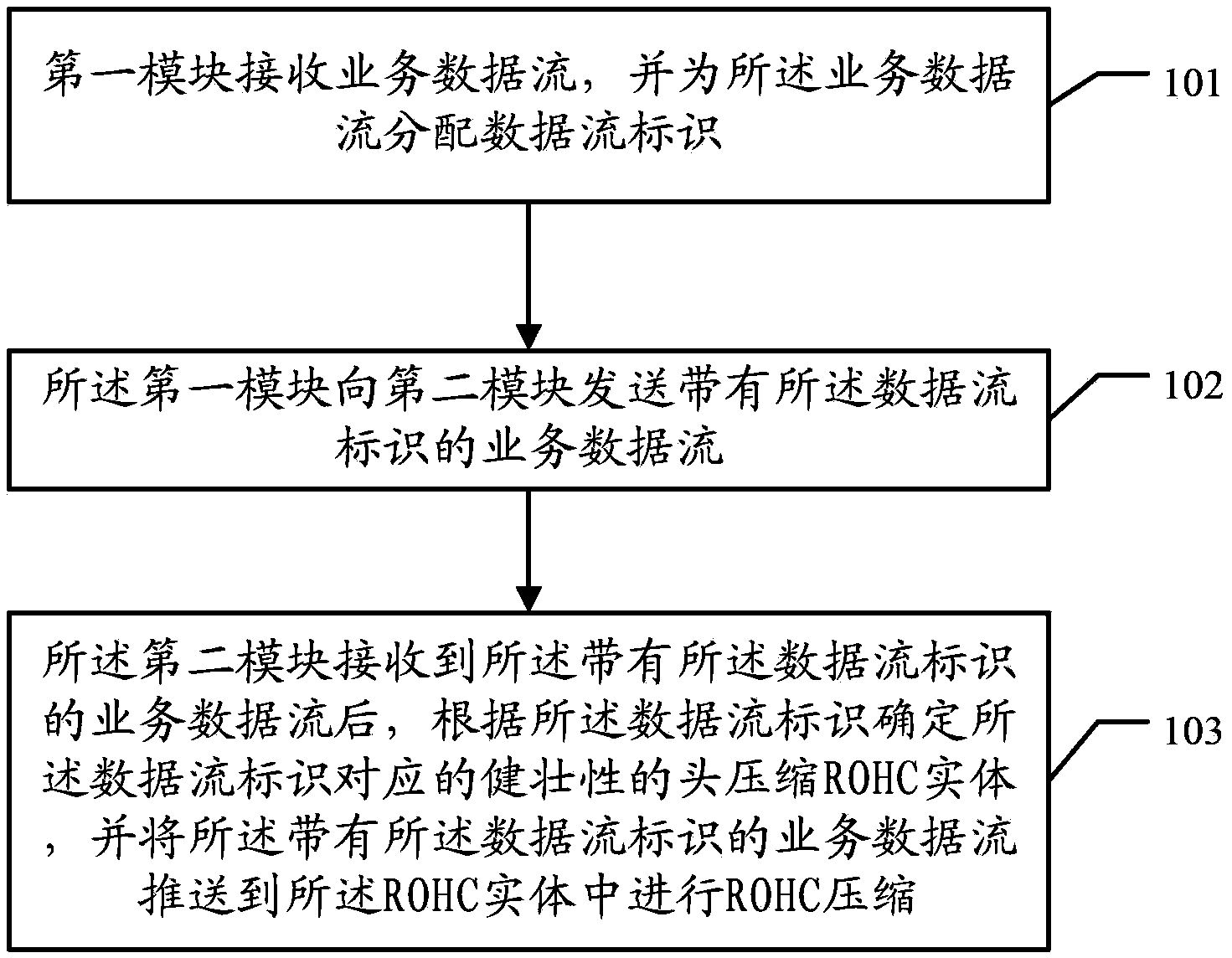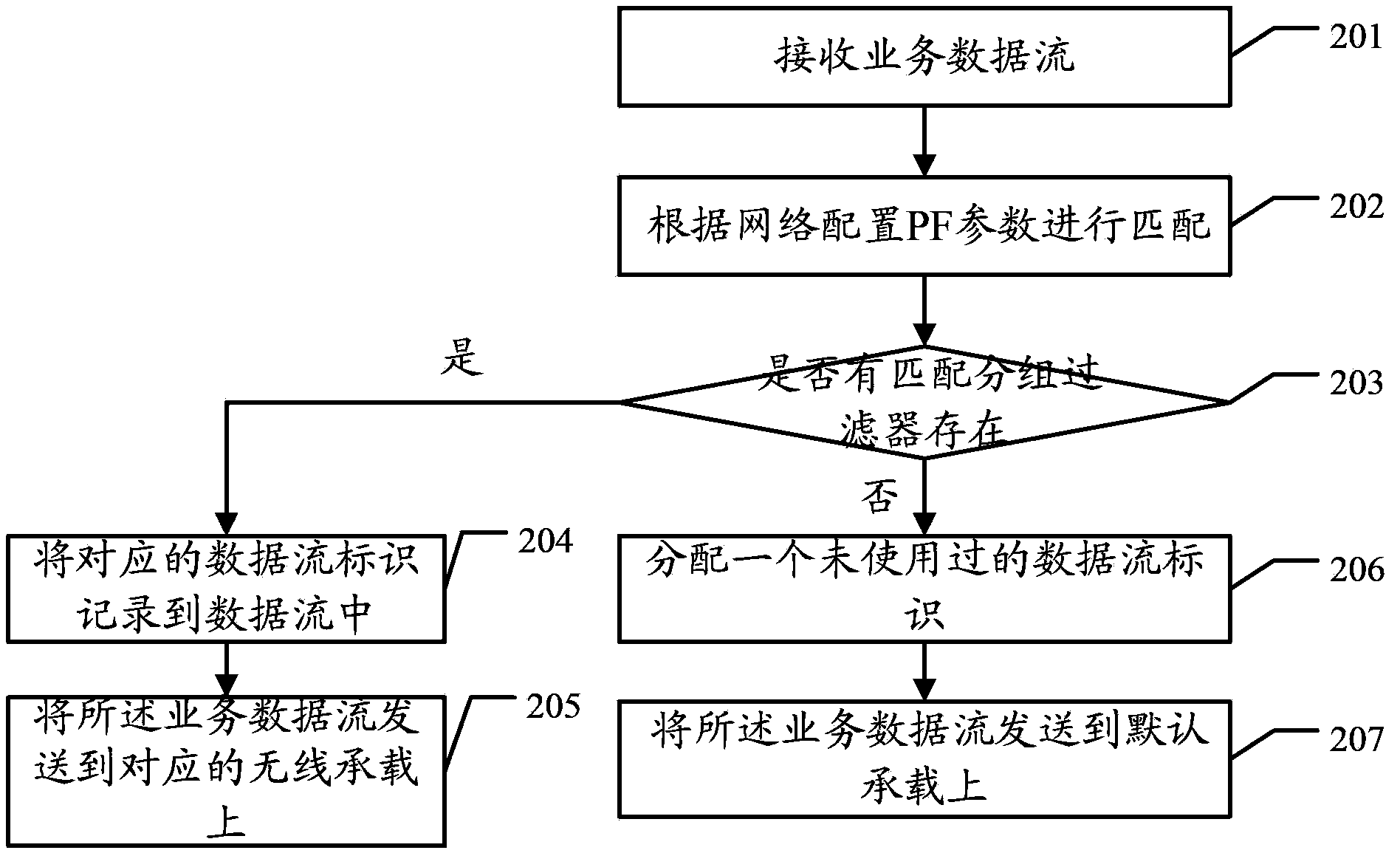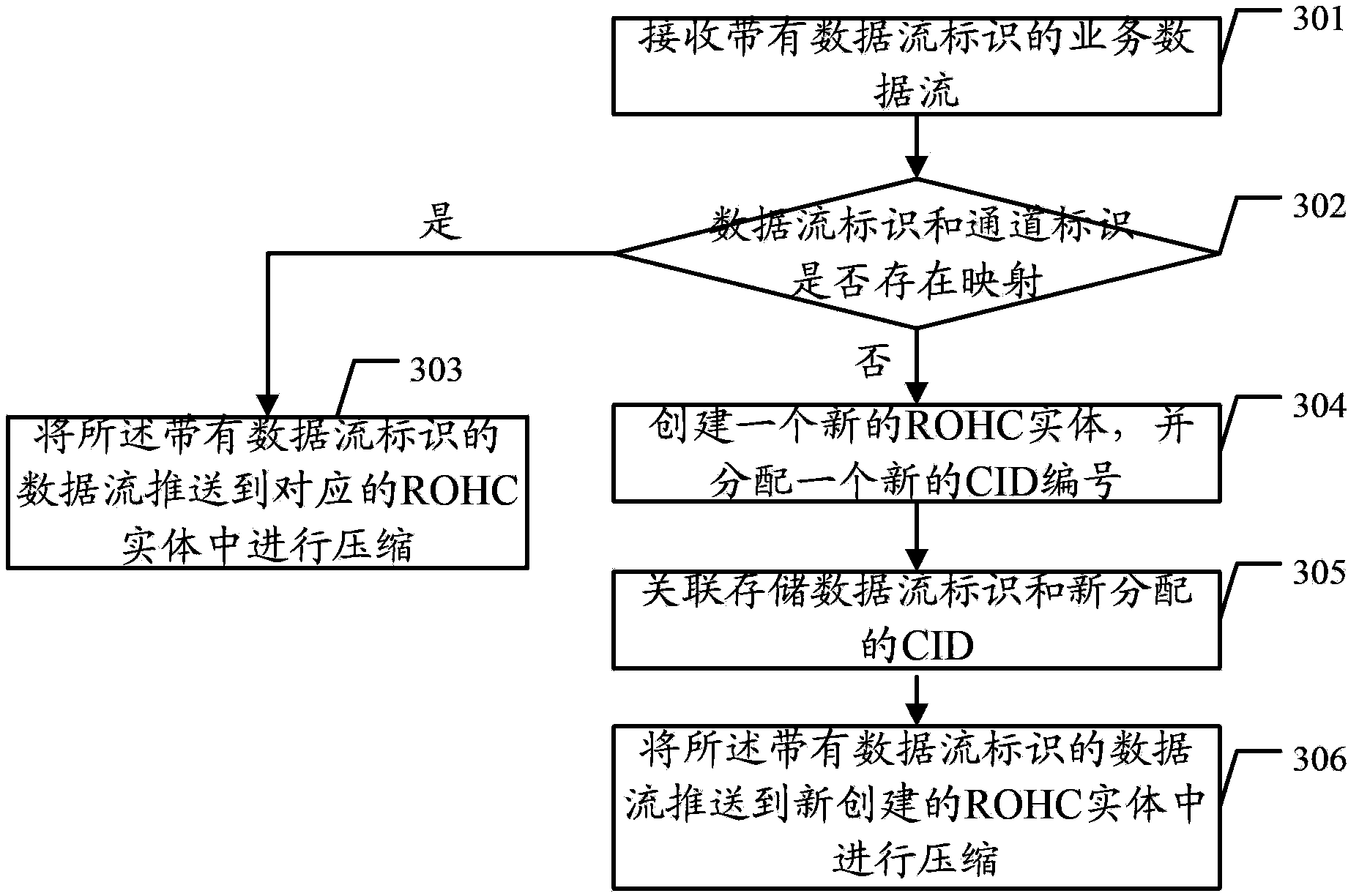Method and equipment for processing data flow
A technology of data flow and equipment, which is applied in the field of communication, can solve the problems of reducing the efficiency of data flow processing and not being applicable to fast transmission networks, and achieve the effect of improving efficiency
- Summary
- Abstract
- Description
- Claims
- Application Information
AI Technical Summary
Problems solved by technology
Method used
Image
Examples
Embodiment Construction
[0054] An embodiment of the present invention provides a data stream processing method, which can increase the speed of data stream processing. The embodiment of the present invention also provides corresponding equipment. Each will be described in detail below.
[0055] refer to figure 1 An embodiment of the data stream processing method provided by the embodiment of the present invention includes:
[0056] 101. The first processing module receives a service data flow, and assigns a data flow identifier to the service data flow.
[0057] 102. The first processing module sends the service data flow with the data flow identifier to the second processing module;
[0058] 103. After the second processing module receives the service data flow with the data flow identifier, it determines the robust header compression ROHC entity corresponding to the data flow identifier according to the data flow identifier, and stores the Push the service data flow with the data flow identifie...
PUM
 Login to View More
Login to View More Abstract
Description
Claims
Application Information
 Login to View More
Login to View More - R&D
- Intellectual Property
- Life Sciences
- Materials
- Tech Scout
- Unparalleled Data Quality
- Higher Quality Content
- 60% Fewer Hallucinations
Browse by: Latest US Patents, China's latest patents, Technical Efficacy Thesaurus, Application Domain, Technology Topic, Popular Technical Reports.
© 2025 PatSnap. All rights reserved.Legal|Privacy policy|Modern Slavery Act Transparency Statement|Sitemap|About US| Contact US: help@patsnap.com



